- Our sales dept suggested we’d show some skin?
- Our first Watchman customer, visiting from Kepler-186f
WATCHMAN Jacket, Okinawa & Banana Camo (Raft Yellow)
“Sea Hunt” Collection, mfsc Spring 2014
Those with beauty sleep requirements should greet the suggestion of joining the crew of a military ship with “Euhh, like no“.
While at sea, days are divided in six watches of four hours, if I remember well. A typical work day on board starts with the 0730 wake-up call, and ends somewhat about nine hours later. Then comes the watch. If the 2000 to 2400 is not bad, the mid-watch of 0000 to 0400 is lovely.
I thought of leaving the mission to comply with the International Regulations for Preventing Collisions at Sea rules of 1972 to more qualified personnel, and decided to work around those graveyard shifts by dozing off. In the dimly lit sauna-like transmission cabin where I stood my watch, I developed an elaborate survival routine. It involved finely tuning my ear for the sound of approaching footsteps as I laid on the steel floor, and a well rehearsed fully-alert facial expression conveying a “just picking up my pen, Chef” type message.
I never got caught by the chef de quart though. I suspect that efforts at keeping that cabin productive past midnight had long been abandoned by command. By the end of my tour, I eventually found an actual folding cot, concealed behind some clunky equipment belonging to the radio guys in the adjacent cabin.
And I thought I had the routine down…
To balance with such fine examples of efficiency and professionalism, a ship at sea needs a proper watchman. The International Maritime Organization stipulates that:
“Every vessel shall at all times maintain a proper look-out by sight and hearing as well as by all available means appropriate in the prevailing circumstances and conditions so as to make a full appraisal of the situation and of the risk of collision.”
And now, with no further ado, the stuff of legend, your pulp fiction dose of non-sense, the anticipated episode of “Tall Tales From Delusion Island”!
Here she goes.
…While cruising warm tropical waters, the Watchman Jacket turned out to be a practical garment for the Team’s lookout. Not every day brought its load of sunken XVI Century galleon cargo. So, standing watch on deck or at the helm could prove monotonous. The multiple pockets became a blessing. Housing everything from notebooks, first aid kit, carving knife, maps, snacks, rum flask, iPod… and of course the apple to keep the corpsman away.
When scouting on shore, the sturdy denim twill version was often preferred over the high-visibility raft yellow model, a color typical of pro seafaring gear.
Granted, denim is a good look in the jungle, but signaling your presence is a double edged machete. So here is another story for you.
The Team had organized a few expeditions to Netherlands New Guinea (known today as Indonesia), attempting to shed light on the fate of an adventurous 23 year-old by the name of Michael Rockefeller (yes, that Rockefeller), who vanished in November 1961 while collecting Art on cannibal territory, of all places. This unlikely outcome of privileged upbringings stirred the International press interest in the region. Extensive Dutch government and Rockefeller family organized air-sea search parties flocked.
All that was found was an empty red gasoline can that the young explorer had strapped himself to while trying to reach shore after his boat capsized at the mouth of the Betsj river and drifted to sea… His companion of misfortune, scientist Rene Wassing, who opted to cling on to the capsized boat and wait for a rescue team, survived.
So…
Did Michael simply drown?
Was he abducted by Papuan tribesmen and promoted Great-White-God-Who-Comes-From-The-Sea?
Was he speared by an aggravated headhunter protecting his stone age status?
Was he spotted some seven years later on the remote island of Kanapu, as claimed a mysterious Australian smuggler known as ‘Donahue‘?
Is he hanging in the Asmat Chief’s hut, like on the wall?
Crocodile bait?
….
Are you still there?
Allo.
Allo?
For the brave few still awake, the 1961 documentary film “Le Ciel et la Boue” (“Sky Above and Mud Beneath”), although not directly related since it documents an earlier event (a 1959 French expedition that crossed the then uncharted jungles of the entire New Guinea island, from South to North), would provide a proper visual backdrop to the above (true) story. I just found a copy on DVD (it’s an added bonus on the 1976 French film “Black and White in Color“, easier to find than the original documentary), looking forward to watching it.
Another recent find is “La hache de pierre“, a book by Gérard Delloye documenting the filming of that 1959 ethnographic endeavor. The footnotes mention that the book brings some interesting perspective on Michael Rockefeller’s vanishing… Most photos below are copyright of Tony Saulnier, photographer on that venture.
In 1961, the year of the disappearance, Operation Trikora was to take news anchors attention away from this Rockefeller case. But that’s another story, enough drifting for a day.
However, for the latest whereabouts of Michael Rockefeller, insomniacs can look here and there and everywhere.
- Michael Rockefeller 1961
- Protecting oneself from the ravage of the sun
- French team that filmed “Le Ciel et la Boue” 1959
- Gerard Delloye, author of “La Hache de Pierre”
- Asmat warrior, West Papua
- New Guinea
It’s almost time for Kumbaya, so let’s regroup around our Spring 2014 “Sea Hunt” camp fire.
The Team liked to keep it light on emotionally-charged rescue missions. While on treks in West Papua, the running joke with the mangrove-scouting pirogue patrol was that in the event of an encounter with javelin-agitating Asmat headhunters, Team members could use the raft yellow Watchman jacket to go climb up banana trees and hide. The name ‘banana camo’ stuck, while the denim issue was nicknamed ‘Okinawa’ due to the provenance of the sugarcane fibers that constituted 50% of the fabric content.
This original Mister Freedom® jacket design is somewhat of the UFO of our “Sea Hunt” Spring 2014 Collection.
The two lower chest pockets are inspired by a 1930’s US Army pullover denim shirt. The keen eye will notice that the Watchman Jacket pockets differ from its 1930’s sisters however. There is an added layer with a slanted opening, upgrading the original somewhat impractical ‘map’ pockets to ‘shove-it-all-in’ status.
Serendipity has it that Mr. Gilbert Sarthre, cameraman on that French 1959 expedition, was wearing one of those 1930’s US army denim pullover shirt. Military surplus was not an unusual part of an adventurer’s field gear, as often documented in period photography and old film footage.
- Denim pullover shirts, US Army circa 1937
- Cameraman Gilbert Sarthre wearing a surplus 1930s US Army denim pullover shirt, 1959
- Banana tree survival kit, tested April 2014.
As with our Skipper Jacket, hi-tech Velcro® closures are featured on the slanted pockets and wrist cuffs.
Removable buttons, a feature of several early vintage uniforms and workwear, made snagging less likely during laundry. For the Okinawa Watchman, we used vintage New Old Stock composite anchor ring-buttons, familiar to those of you who have already flown a Pensacola seaplane.
The ‘Banana Camo’ features buttons made from, you guessed it, tropical palm trees (corozo wood, aka ivory nut.)
On the chapter of the nautical type front closure, the button attachment loops are made from genuine NOS paracord, an obvious overkill, I agree.
The WATCHMAN Jacket is designed in California by Mister Freedom® and manufactured in Japan in collaboration with Sugar Cane Co.
SPECS:
FABRIC:
a) “OKINAWA” Denim: Unsanforized 10 Oz. left-hand twill indigo denim, 50% cotton 50% sugar cane fibers, solid white Selvedge ID, milled in Japan. (SC401)
b) “RAFT Yellow” canvas, aka ‘Banana Camo’: New Old Stock 100% cotton canvas, mid-weight, solid selvedge. Two different shades of yellow are used. The body is more mustard yellow, while pockets offer a subtle contrast with a brighter yellow (for US production only). We found a limited amount of this NOS canvas.
DETAILS:
* An original mfsc pattern, inspired by the wonderful world of vintage clothing and cannibals.
* Shorter type length, reminiscent of vintage fishing jackets.
* Removable ring buttons, NOS composite anchor for the denim issue, corozo wood for the yellow canvas.
* Two lower ‘double’ pockets and two slanted inverted box-pleat pockets (arm and chest)
* Removable throat latch.
* Velcro® pocket closure and wrist cuffs.
* Split back panels and front panels facing display fabric selvedge.
* Contrast wrist gussets and collar facing fabric.
* 100% cotton stitching, Olive Green color.
* Unlined, with no open or overlocked visible seams.
* Bottom adjusting cotton string.
* Made in Japan.
WASHING/SIZING:
Both “Okinawa” and “Raft yellow” options come unwashed and will approximately shrink to the same tagged size with an original cold soak/line dry. Further shrinkage to be expected with the use of hot water and heat dryer, obviously not recommended for the Okinawa denim issue.
Do REMOVE the buttons when machine washing this garment, as the metal rings tend to snag the fabric during agitation and spinning cycles. Please note that some color transfer from the indigo denim to the yellow canvas might occur should you use a heat dryer.
The fit is quite generous, although intently on the shorter side, somewhere between the Skipper and the Ranch Blouse. The resulting silhouette will obviously vary according to one’s built and body proportions.
I am usually a medium (38) in mfsc jackets, and am wearing a 38 in the Watchman.
Please refer to cold soak/line dry measurements chart below.
Available RAW/unwashed.
SIZES:
36 (Small)
38 (Medium)
40 (Large)
42 (X-Large)
44 (XX-Large)
Retail
a) “Okinawa” Indigo Denim $449.95
b) “Banana Camo” Raft yellow Canvas $449.95
Soon available from www.misterfreedom.com
Please call 323-653-2014 or email sales@misterfreedom.com with any questions not answered above.
As always, thank you sincerely for your support 🙂


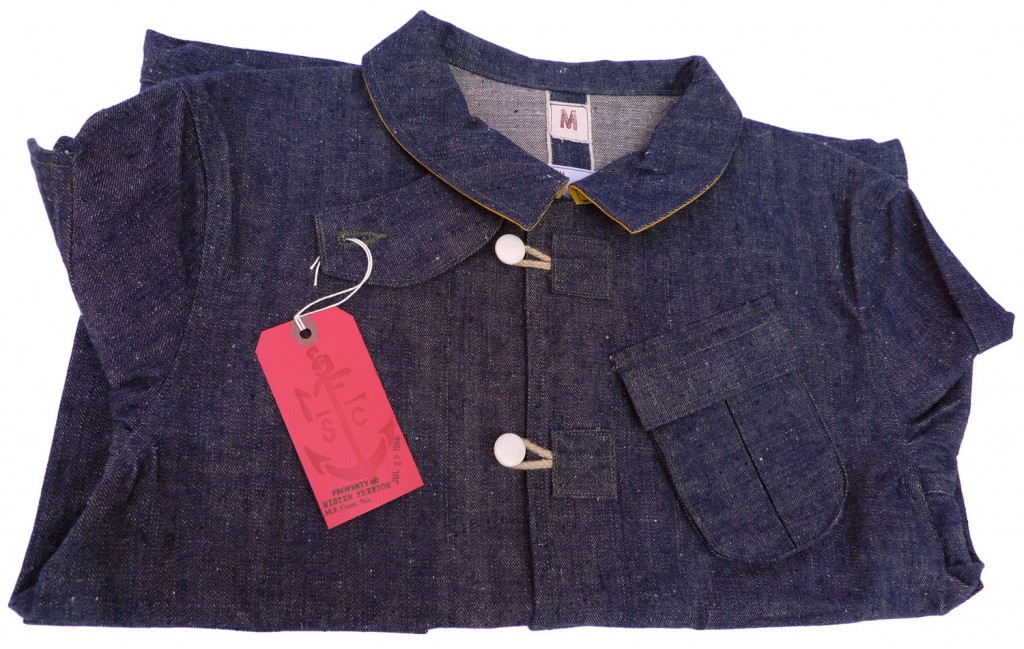
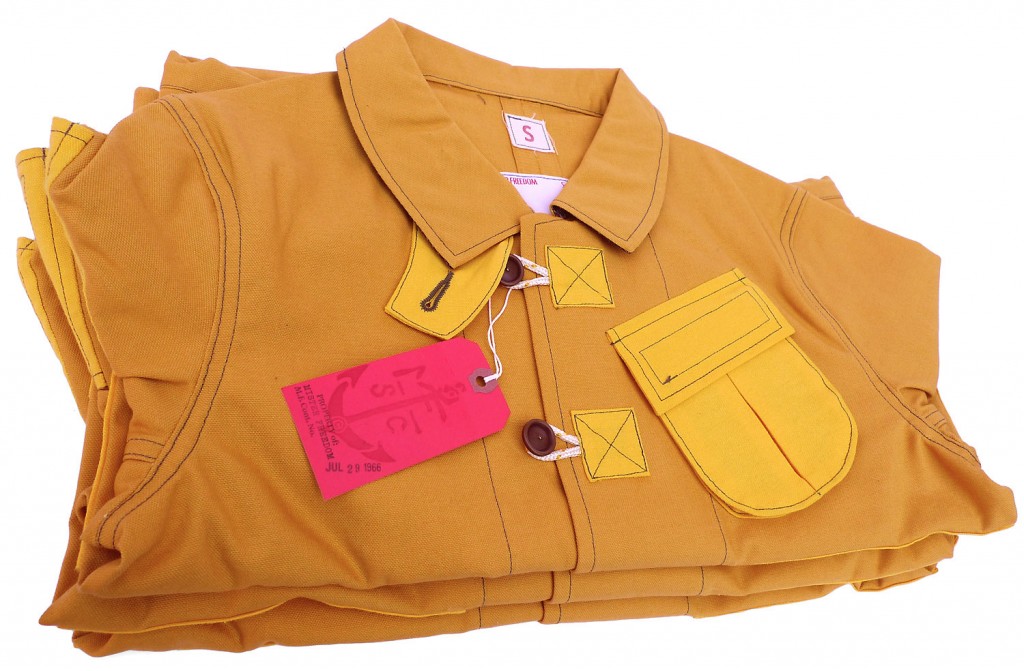
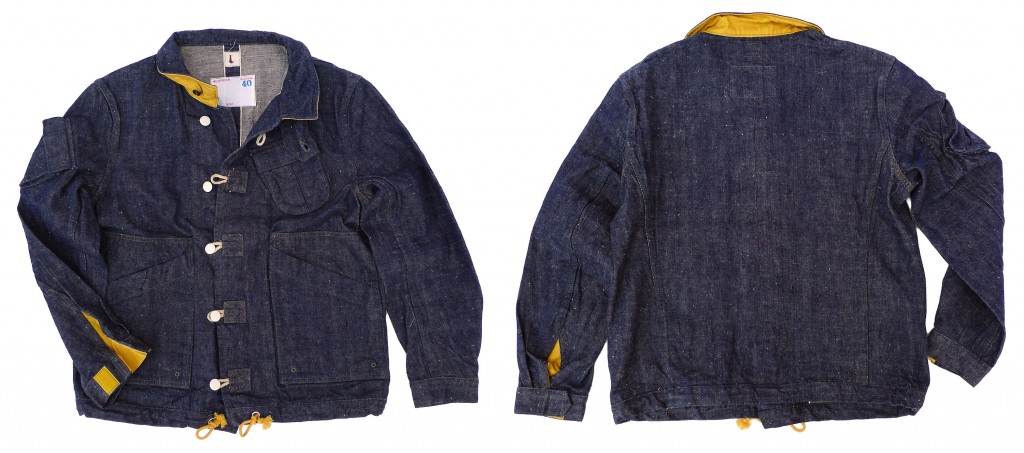
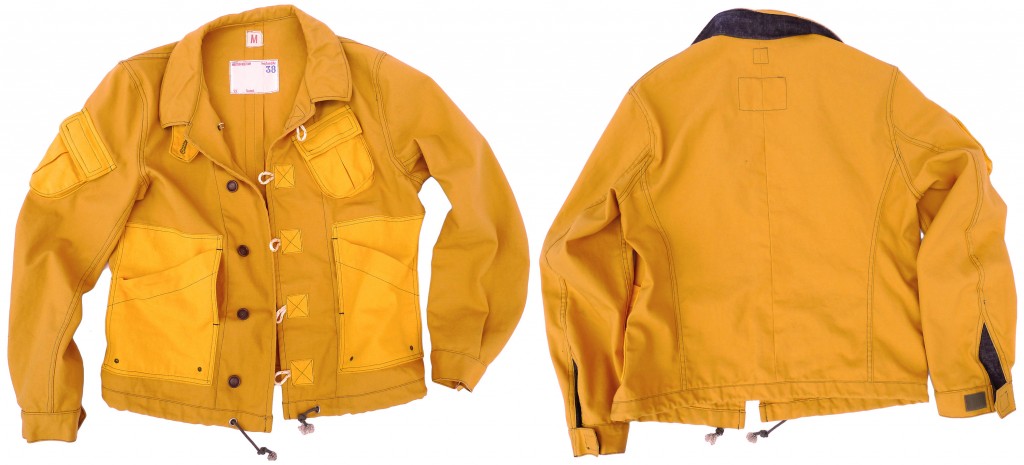
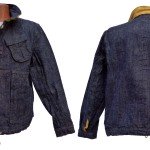
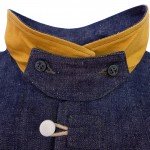
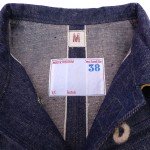
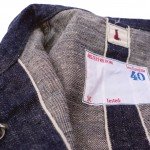
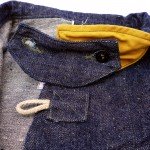
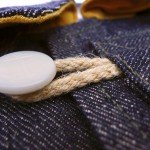
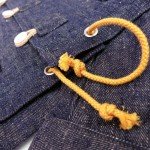
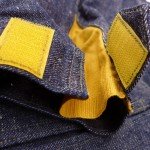
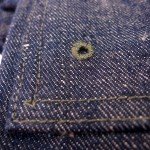
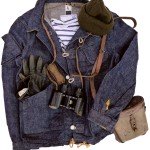
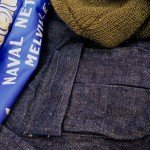
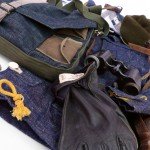
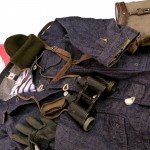
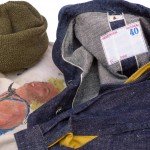
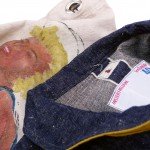
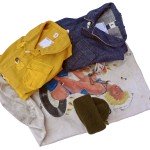

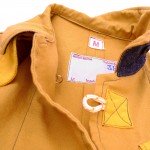
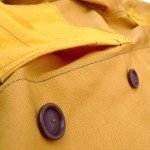
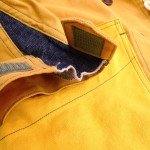
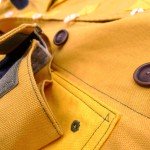
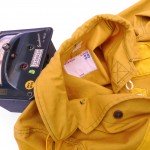
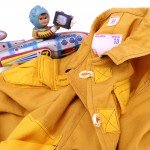
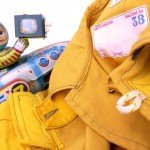
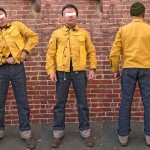
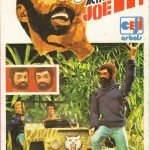
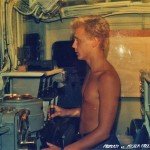


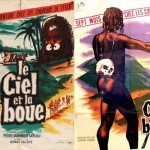
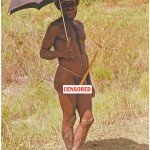
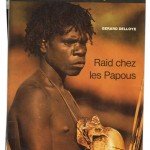
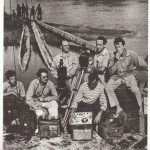
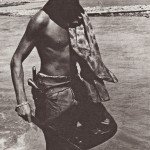
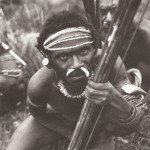
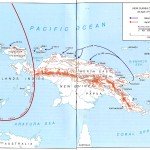
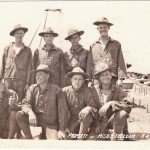
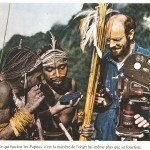

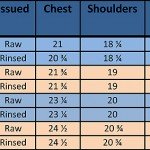
Leave a Reply
You must be logged in to post a comment.